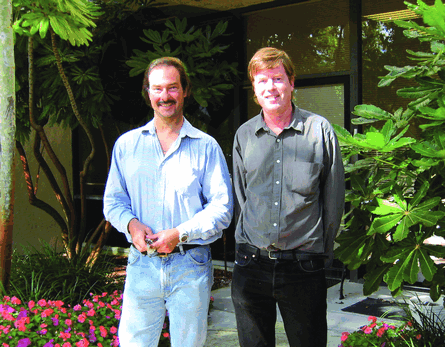Mathematicians Bruce Sawhill and Jim Herriot have spent five years modelling who might pay for a seat in DayJet's Eclipse 500s, using complexity science to co-ordinate customers and aircraft
Bruce Sawhill and Jim Herriot were among the first employees of Florida-based DayJet, which set them on predicting the travel of every potential customer.
Where are your degrees from?
Sawhill: PhD in theoretical physics, from Stanford University.
Herriot: BSc from Stanford University in computer science, other graduate work in computer science, cognitive science, and a PhD in the social sciences.
What have been the highlights of your careers?
Herriot: I was also head of the US side of joint US-China project on earthquake research in the early 1980s. I was one of the founders of Java and JavaSoft at Sun Microsystems and Sun Labs in the early 1990s, and an early member of BiosGroup in Santa Fe, New Mexico, where I met Bruce.
Sawhill: DayJet is a highlight and prior to that, some of the work we did at Bios for the Federal Government. Before then, research in theoretical ecology and genetics about the stability and diversity of ecosystems, as well as, some work on the cosmological constant (Big Bang theory) in theoretical physics.
 |
|---|
© Jeffrey Decker |
You specialise in what used to be called Chaos Theory?
Herriot: Complexity science often serves as the "glue" that ties many sciences together. Bruce and I sometimes call complexity science "Math Part 2" - in that it continues the tradition of mathematics, while extending maths beyond analytic equations into computational modelling.
At DayJet, we're using complexity science to help engineer our operations and business to remain, among others, in the "sweet spot" of high customer satisfaction and profit, regardless of change and embracing change.
Did you really recreate everybody's behaviour?
Herriot: We created the agent-based model, kind of the Sim City of DayJet, which we use to understand how demand works. There are about 50 million people living in the south-east region of the USA and there are about 500,000 business trips one way per day of more than 100 miles. We modelled every one.
Sawhill: That is modelling people's behaviour: How people make their own choices rather than figuring out what everyone is going to do at once.
Why are these models only now possible?
Sawhill: Computers have become very powerful in the last 10 years or so. The first model of this nature was done 10 or 12 years ago by Los Alamos lab, which has much bigger resources than we do. It was about a $50 million project.
Have your predictions come true?
Herriot: The exciting thing is that before, we always relied on other people's data. Now we're able to use our own.
Sawhill: Before we had to buy large scales of data but now we're getting all good stuff. All wheat and no chaff.
The DayJet Story The issue of air taxis will be high on the agenda at EBACE, the business aviation show taking place this week in Geneva. US-based DayJet will be the business model most focused on. DayJet was founded in 2002, but the potential really began in 1999, when Ed and Nancy Iacobucci purchased a business jet. In July 2002 the company signed a five-year purchase agreement for more than 1,000 Eclipse 500 VLJs. It launched its per-seat, on-demand service in October 2007, two months after it was given approval by the Federal Aviation Administration. Montgomery, Alabama Macon, Georgia and North Miami/Opa Locka, Florida are the most recent DayPorts, officially being added to the network in late February. DayJet's pricing reflects users' flexibility with its time-value pricing structure. The more flexible a user is, the cheaper the price. There are currently 120 DayStops and 10 DayPorts. Bookings require a minimum of four hours' notice. |
|---|
Source: Flight International
















